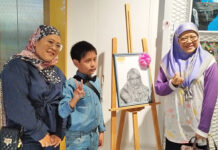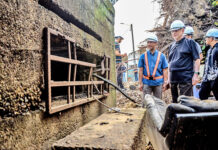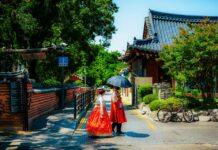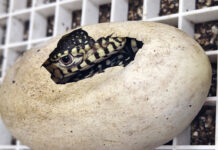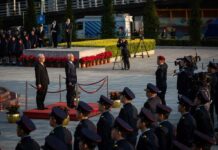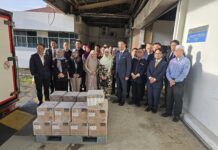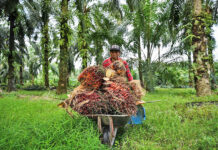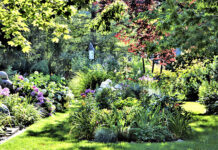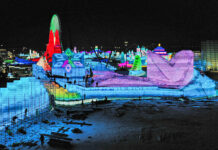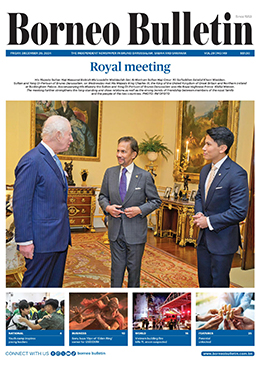ANN/THE STAR – From eating exotic meats in Mongolia to braving through the desert plains on Ethiopia, Malaysian photographer Salliza Salleh is ready for anything when she is on her travel adventures.
To her, experiencing similar things to what the locals experiences is the best method to educate about a new place, its history and people, as well as understanding its culture.
Salliza, from Kelantan is currently based in Selangor. She is also a content creator, social media consultant and occasionally writes about photography for a national newspaper.
When Salliza was 18, she left Malaysia to further her studies in the United States. After graduating, she returned home to complete her MBA in database management, and then later, worked at a bank for many years.
When she finally realised that the corporate life was actually not for her, Salliza quit her job and started travelling the world.
At the same time, she began documenting her travels and adventures with pictures, posting them on her social media pages. The more she travelled, the more she honed her photography skills, too. But there’s also a practical reason for her to take pictures whenever – and wherever – she travels.
“I tend to forget things, so having a camera is very useful,” she said half-jokingly in an interview.
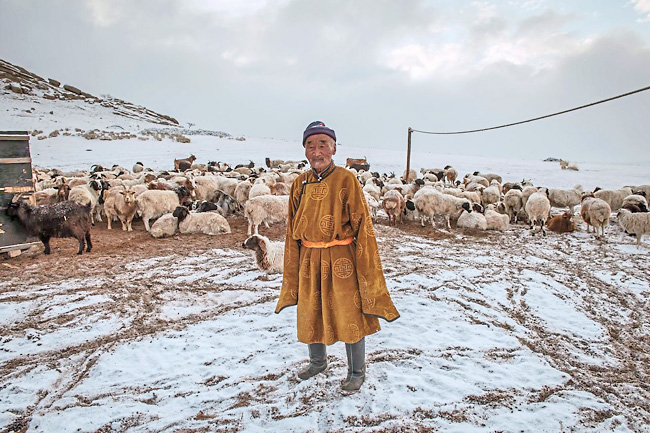
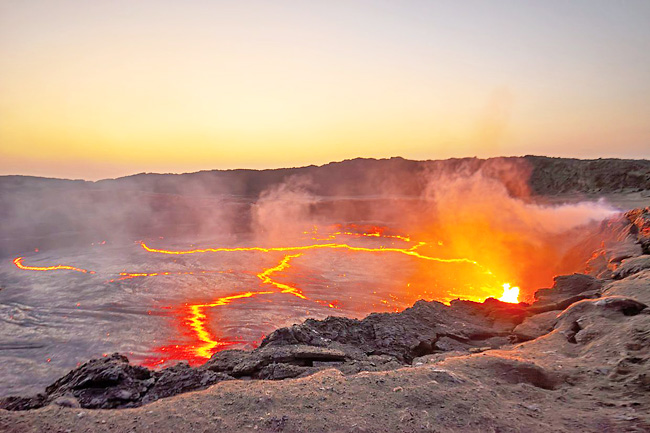
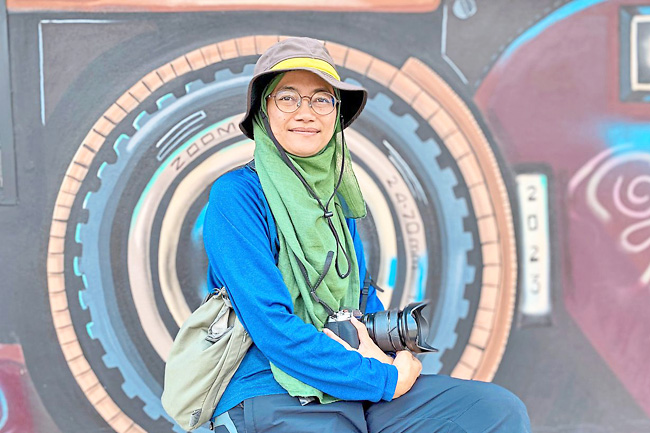
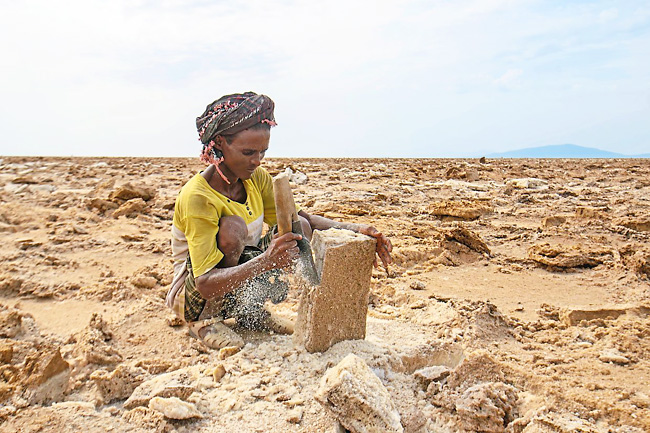
Salliza said that taking pictures is a great way for her to remember her journeys and experiences, as she sometimes can’t recall certain things like the exact name of a village, for example.
“I have to get the correct information for my blog and my social media posts, so sometimes I have to look through all the pictures I’ve taken to make sure I spelt the name of a place or described things correctly,” she explained.
What makes her pictures and stories (she blogs under the pen name “Matsuda Mashimaru”) even more interesting is the fact that Salliza usually goes to places most tourists tend to avoid. Rather than visiting popular destinations, she and her group of like-minded traveller friends prefer going to parts of the world that are completely different from what we normally see in our own backyard.
Which is why in 2015, she and six other friends travelled all the way to the Horn Of Africa – Ethiopia – to experience… extreme heat.
Specifically, the group wanted to check out Danakil Depression or the “Gateway To Hell”, so called because of its severe weather conditions.
“There is no such thing as a charmed life here, especially not in the dry plains,” Salliza said.
She and her group spent three days at Danakil Depression, entering via the capital city of Afar, Semera. The Afar Region is located in the north-east of Ethiopia, and is also home to the Afar people.
Salliza described the place as an “extremely hot sauna”; the temperatures in Danakil Depression can go as high as 50 degree Celsius (°C), especially in summer. Makes you wonder why anyone would visit the place.
“The adventure was a blessing in disguise, as I found courage in the most unlikeliest of places,” said Salliza.
The place is also home to colourful acid pools, considered another attraction to many tourists around the world. The dazzling colours of the salt lakes, which appear in different hues of yellow and orange, are said to be caused by magma-heated seawater and rain reacting to volcanic minerals.
Salliza and her group also went on a three-hour hike to the Erta Ale, an active basaltic shield volcano – it is actually the most active volcano in Ethiopia.
A ranger was assigned to each person in the group, as it was required by law for tourists.
“The ranger was there as a safety precaution for the group. Apparently, kidnapping cases involving tourists are a common occurrence there,” she explained.
“I haven’t really hiked much at that point, let alone in the dark. I thought it would be as ‘easy’ as climbing Mount Bromo in Indonesia, because that’s what some people had said on the Internet.
“Typically, the 15 kilometres (km) trek would take about three hours to complete but it took us much longer as we had lost our way! We were surrounded by darkness, which made the hike even more unbearable given the hot and humid air. We had no clue where we were,” Salliza revealed.
“By the time we reached the site, it was already past midnight.”
To make the situation worse, they all ran out of water. “In the unrelenting heat, you have to constantly drink water to keep yourself hydrated. Better yet, get yourself some oral rehydration salts,” she said.
“I had experienced the dry and hot season in Saudi Arabia prior to my trip to Ethiopia, but the heat in Danakil Depression was just torturous. It made breathing difficult. I choked on the dust and the wind felt as if someone was blowing a hairdryer directly to my face.”
Erta Ale is also a good place to see the Milky Way and catch the sunrise. Unfortunately for Salliza and her group, they missed the chance to do these.
“Even though I didn’t get to realise my initial plan, the experience nevertheless was precious and out of this world,” she said.
FROM HOT TO COLD
Two years after she conquered one of the world’s hottest places, Salliza made another adrenaline-filled adventure to one of the coldest destinations on Earth – Mongolia, or specifically, Ulaanbaatar.
She booked a ride on the Trans Siberian Railway and travelled over 1,350km for two days from the Chinese capital of Beijing, to Ulaanbaatar.
There was no escaping the frosty weather but Salliza and her friends managed to explore several landmarks throughout their eight-day trip.
It was certainly a cultural eye-opener for her, doing things like eating traditional dishes made from “mystery meats” and experiencing the nomadic life of the Mongolians.
Most Mongolians are nomadic, and live in a skin-insulated, portable tent known as ger (or yurt) that allows them to “easily” move from one place to another.
“The majority of the country’s population is still nomadic, which I thought was impressive.
“They move around a lot – at least four times a year – in search of the best place for their livestock and to protect themselves from the harsh climate, especially during winter,” Salliza explained.
During winters in Mongolia, temperatures can go as low as -30°C!
Intrigued by their nomadic lifestyle, Salliza was inspired to adopt a similar way of life, as she said it would enable her to explore outside her comfort zone.
Salliza and her group had the opportunity to stay with three families at different campsites in Mongolia. “We couldn’t really understand each other – there were a lot of non-verbal exchanges like hand gestures and facial expressions. Our conversations were aided by our guide though, so it wasn’t really a major problem.
“I was touched by their warmth and hospitality, which led the way to new friendships,” she shared.
According to her, when you live with the locals, it is best that you also eat what they eat, so as not to offend anyone, and to understand their way of life better. Salliza was offered a few meat dishes, and being curious by nature, she tried them. It turned out to be horse meat and a part of a cow’s organs.
Salliza is still mesmerised by her overall experience in Mongolia.
“The place is breathtakingly beautiful. Vast plains and far on the horizon, snow-capped mountains dotting the landscape,” she said.





